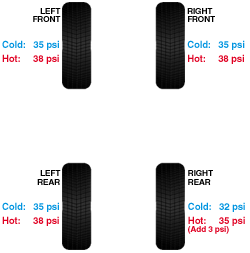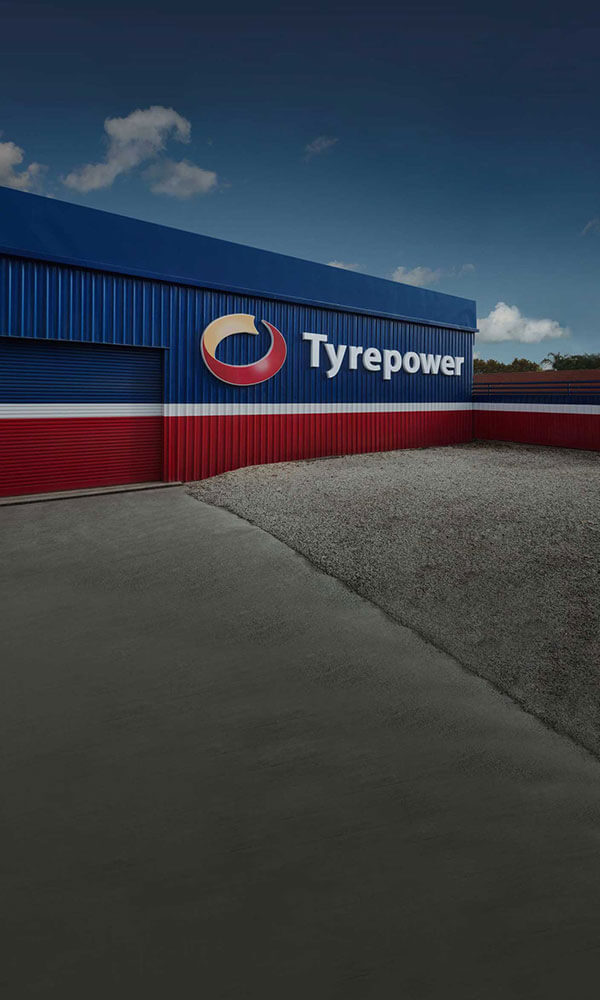Tyre Pressure checks are as important as tune ups for your vehicle.
Keeping the correct air pressure in your tyres is as important as giving your engine a tune up. The economic benefits are perhaps even greater! With the right amount of air pressure, your tyres wear longer, save fuel, enhance handling and prevent accidents. The effects of not maintaining correct tyre pressure are:
- poor petrol mileage
- loss of tyre life
- bad handling (perhaps even loss of control)
Check air pressure routinely
Perhaps because our tyres do so much without seeming to need any attention, we tend to overlook this important task. But tyres do lose pressure, slowly but surely everyday, through the process of permeation. Generally, a tyre will lose up to one or two kilopascals of air per month in cool weather and even more in warmer weather. Also, tyres are subjected to flexing and impacts that can diminish air pressure.
So, think in terms of refilling your tyre just like you do your petrol tank; actually that's a good reminder, refill your tyres every other time you fill up at the petrol station. That's the recommended interval. Another time to check air pressure is when the tyres are rotated. Many vehicles have different tyre pressures on the front and rear axle, so remember to have this adjustment made. Also remember to have the pressure in your spare checked. The space-saver type spare requires a much higher air pressure level than other tyres and is virtually useless (due to overloading) at lower air pressure levels.
Where to find tyre pressure information
The correct air pressure may be found in the vehicle owner's manual or on the tyre placard (attached to the vehicle door edge, doorpost, glove box door or fuel doorThe placard tells you the maximum vehicle load, the cold tyre pressures and the tyre size recommended by the vehicle manufacturer.
Another valuable resource is the Tyre Load/Inflation Tables.Your local Tyrepower outlet should have a copy. Not only will this document tell you the correct tyre pressure for stock sizes, but it will provide the information on optional plus sizes as well.
Example – Honda Civic
A Honda Civic with the stock size 185/65R-14; recommended air pressure is 193 kpa. Plus one size is 195/55R-15 with a recommended air pressure of 220 kpa. Plus two size is 205/45R-16 with a recommended air pressure of 248 kpa. Note how the air pressure increases with plus sizing to meet the load carrying capacity for the car.
How other factors change air pressure
Besides the routine air check, other circumstances necessitate a visit to the air pump. Seasonal changes or altitude changes create a rise or drop in air pressure (for every 10 degrees change in temperature, tyre air pressure changes approximately 7 kpa).
But perhaps the most overlooked factor is vehicle loading for trucks and 4WDs. Since these vehicles can be configured and loaded in many ways, the proper inflation pressure should be determined by actual tyre loads. This is best determined by weighing the vehicle; vehicle loading can change from trip to trip

Remember that tyre failure can occur due to under inflation and overloading!
One of the most dangerous conditions that can exist is the slow leak. Sometimes a small nail, screw or other object will puncture a tyre and then act as an inefficient plug. Air pressure drops slowly over a matter of hours or days, undetected by the driver.
Learn to be alert to the symptoms of this condition. Be aware of any pulling or vibration that seems unnatural. And listen for any tick-ticking sound—especially audible at slow, parking lot speeds. If you detect this, get off the road and inspect the tyres on the side of the pull, vibration or sound. A bulging sidewall and/or excessively hot tyre indicate a slow leak. Put on your spare tyre and get punctured unit repaired.
Ask the repair technician if any sidewall damage has occurred (a powdery residue inside the tyre indicates this condition). If so, have the tyre replaced.
How to check air pressure
Properly checking tyre pressure requires an accurate air gauge. Many people believe that they can check air pressure just by looking at the tyre and judging the sidewall appearance. Also, many people use the air gauges at service stations, which can be grossly inaccurate due to exposure or abuse. Invest in a quality air gauge.
When checking your vehicle's tyre pressure, make sure the tyres are "cold". Cold air pressure means that the vehicle has not yet been driven one kilometre (remember that driving on a tyre as well as being in direct sunlight increases its temperature and air pressure). If you must drive more than one kilometre for air, check and record the air pressure in all your tyres before you leave.
Once at the tyre dealer, measure each tyre's inflation again and then note the difference. Inflate the tyres with low pressure to a level that is equal to the recommended cold pressure plus the difference at the higher temperature.
Finally, after completing the pressure check, make sure the valves and extensions are equipped with valve caps to keep out dirt and moisture. Remember to replace the valve assembly when you replace the tyre. This protects against a sudden or consistent loss of air pressure

In this example, add 20 kpa in the right rear tyre to match the other rear tyre's warm reading. When the tyre returns to cold pressure, it should end up at the recommended pressure.
Tyre pressure maintenance helps the environment
How can routine air pressure maintenance impact our environment? Consider that fewer tyres per year would end up in the landfills and scrap heaps that trouble our ecology. How many tyres are we talking about? We estimate that most drivers lose from 10% to as much as 50% of tyre tread life due to under-inflation.
That's a significant statistic. Now consider the extra fuel we burn to push cars along on soft, underinflated tyres. Tyres do require extra energy to roll if they are under inflated. While the statistics vary widely and inconclusively, the implications are staggering. So maintaining tyre pressure is a small line item in our busy daily routines, but it adds up to big environmental consequences. We must all care and take action to do the right thing.

